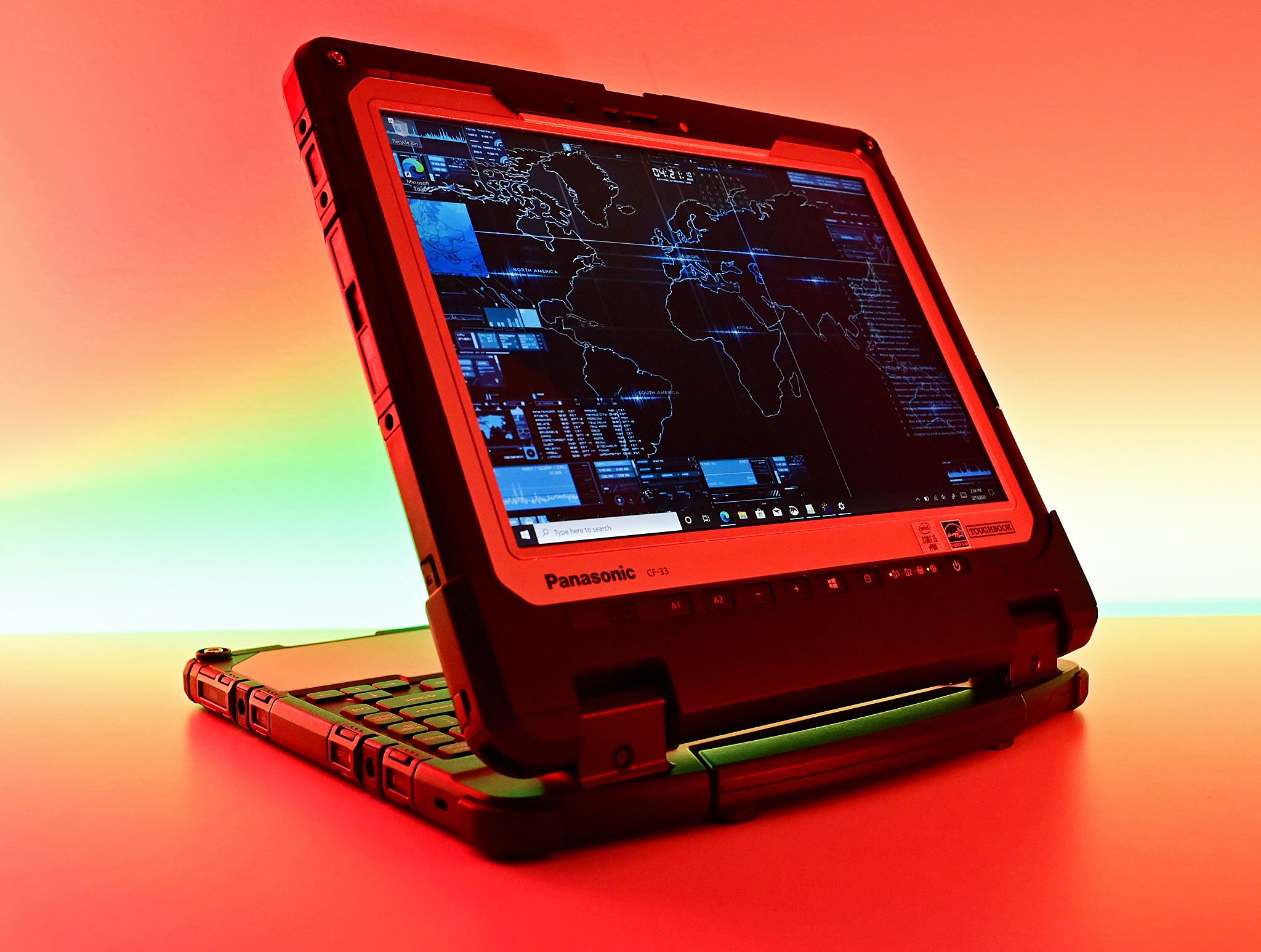Panasonic is synonymous with many things, including its nearly one-of-a-kind series of TOUGHBOOK laptops and tablets. Now going into its 25th year, Panasonic is refreshing the best-selling rugged device laptop, the TOUGHBOOK 33 (CF-33).
Just imagine Microsoft's Surface Book if it went to boot camp with the U.S. Marine Corps.
First introduced in 2017, the TOUGHBOOK 33 is an always-connected laptop that turns into a tablet with pen and inking support. It is also one of the craziest PCs I have ever used. While I find it fascinating, the TOUGHBOOK 33 is designed for the military, police, EMTs, fire, and anyone who works in the most extreme environments.
I have spent the last ten days using it and here is what you need to know about this nearly indestructible laptop.
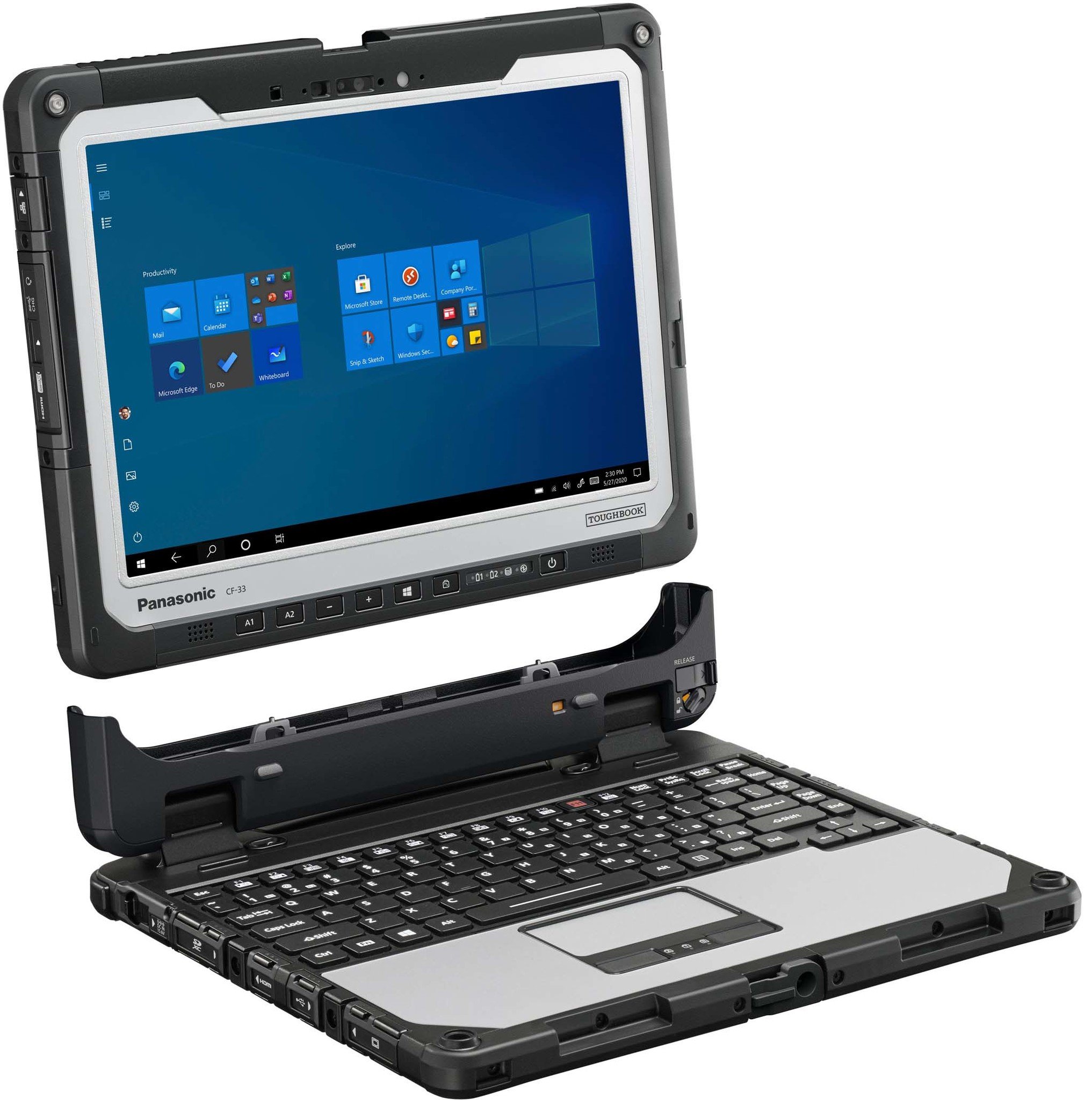
Bottom line: The best-selling rugged tablet PC is back with more features and improved functionality. Built for the military and first responders, the TOUGHBOOK 33 (CF-33) delivers 4G LTE, support for Band 48 CBRS, eSIM, more RAM and storage, improved inking, and Intel 10th Gen. Only the trackpad and OK battery life keep it from being perfect.
Pros
- Excellent display, design, and port selection
- Very bright 3:2 "2K" display
- Supports 4G, Band 48 CBRS, eSIM, inking
- Many modern features added
Cons
- Trackpad is dreadful
- Keyboard backlight is still dim
- Keyboard doesn't extend battery life
Just the specs
Panasonic TOUGHBOOK 33 (2021): At a glance

The Panasonic TOUGHBOOK 33 is a rugged 2-in-1 tablet with optional keyboard attachments designed for harsh environments to be used by EMT, police, fire, and military use. We're using the optional Premium Keyboard for this review, although there is also a Light Keyboard.
| Category | Spec |
|---|---|
| OS | Windows 10 Pro |
| Processor | Intel Core i5-10310U vPRO (4.4GHz) Intel Core i7-10810U vapor (4.9 GHz) |
| RAM | 16GB or 32GB (DDR4-2666MHz) |
| Graphics | Intel UHD |
| Durability | MIL-STD-461F, MIL-STD-810G and IP65 |
| Storage | 512GB or 1GB removable OPAL NVMe SSD |
| Display | 12.0-inch 3:2 QHD (2160 x 1440) Up to 1,200 nits Capacitive gloved multi-touch Anti-reflective (AR) screen treatment Concealed mode; Day/Night modes |
| Ports | Tablet: Type-A (1.5A), Type-C (10Gbps, PD), HDMI, RJ45, Audio Keyboad: Docking, x3 USB-A, SDXC UHS-II, HDMI, VGA D-sub, RJ45, Serial USB |
| Audio | Dual-array mic Dual 91db front-facing speakers |
| Connectivity | Wi-Fi 6 AX201 Optional 4G LTE w/ sat GPS, CBRS Band 48, Band 14 EM7511, FirstNet Optional dedicated GPS (u-blox NEO M8N) Dual high-gain antenna pass-through Bluetooth 5.1 (Class 1) |
| Camera | 2MP full HD front 8MP auto-focus with triple flash rear |
| Keyboard | Premium Keyboard (emissive; rubber) Light Keyboard (emissive) |
| Touchpad | Pressure-sensitive touchpad with multi-touch |
| Security | Windows Hello IR Optional fingerprint via Smartcard add-on |
| Battery | Standard: Li-Ion (1,990 mAh x2) Long Life: Li-Ion (4,120 mAh x2) |
| Dimensions | 12.1" x 9.6" x 0.9" (12.3" x 11.4" x 1.8" with optional Premium Keyboard) |
| Weight | 3.4 lbs. (6.1 lbs. with optional Premium Keyboard) |
TL;DR
All the latest news, reviews, and guides for Windows and Xbox diehards.
Panasonic TOUGHBOOK 33 (2021): What's new

It has been four years since the last iteration of TOUGHBOOK 33, which makes sense as townships, governments, and private contractors who buy it deploy them for years at a time. For 2021, Panasonic is right at the sweet spot for refining old features and supporting new ones that this market segment demands.
Here is the short version of what's new for 2021:
Performance
- Storage: 512GB NVMe SSD standard, up to 1TB supported
- RAM: 16GB DDR4 standard; up to 32GB supported
- Wi-Fi 6 and Bluetooth 5.1
- 10th Gen Intel Core i5 and i7 with vPRO processors
Functionality
- Louder speakers
- Improved camera, Windows Hello IR
- Brighter barcode reader
- Revised advanced keyboard with brighter LEDs, more liquid resistant
Flexability
- Band 48 CBRS supported
- Dual SIM with eSIM
- USB-C port
- New pen and digitizer
Stat of the art security
- OPAL SSD standard
- Microsoft Secured-core PC
- Intel Hardware Shield
- Webcam privacy shutter
Some of these features, like 10th Gen Intel with vPRO, are expected. The same applies to more RAM and improved storage options as customers requested those for productivity reasons. Panasonic is not using Intel 11th Gen because those vPRO processors are not due until later this spring and need further testing.
Support for Band 48 CBRS (Citizens Broadband Radio Service) is fascinating. It is effectively a private LTE network that governments or institutions can deploy, giving them all the LTE security without a public network's risks. Consumers won't see any value to it, but secure agencies will. Likewise, TOUGHBOOK 33 is the first all-rugged Windows 2-in-1 that now supports eSIM. While not widely used yet by U.S. carriers, it is expected to change in the coming years. Of course, there is standard nano-SIM hardware too.
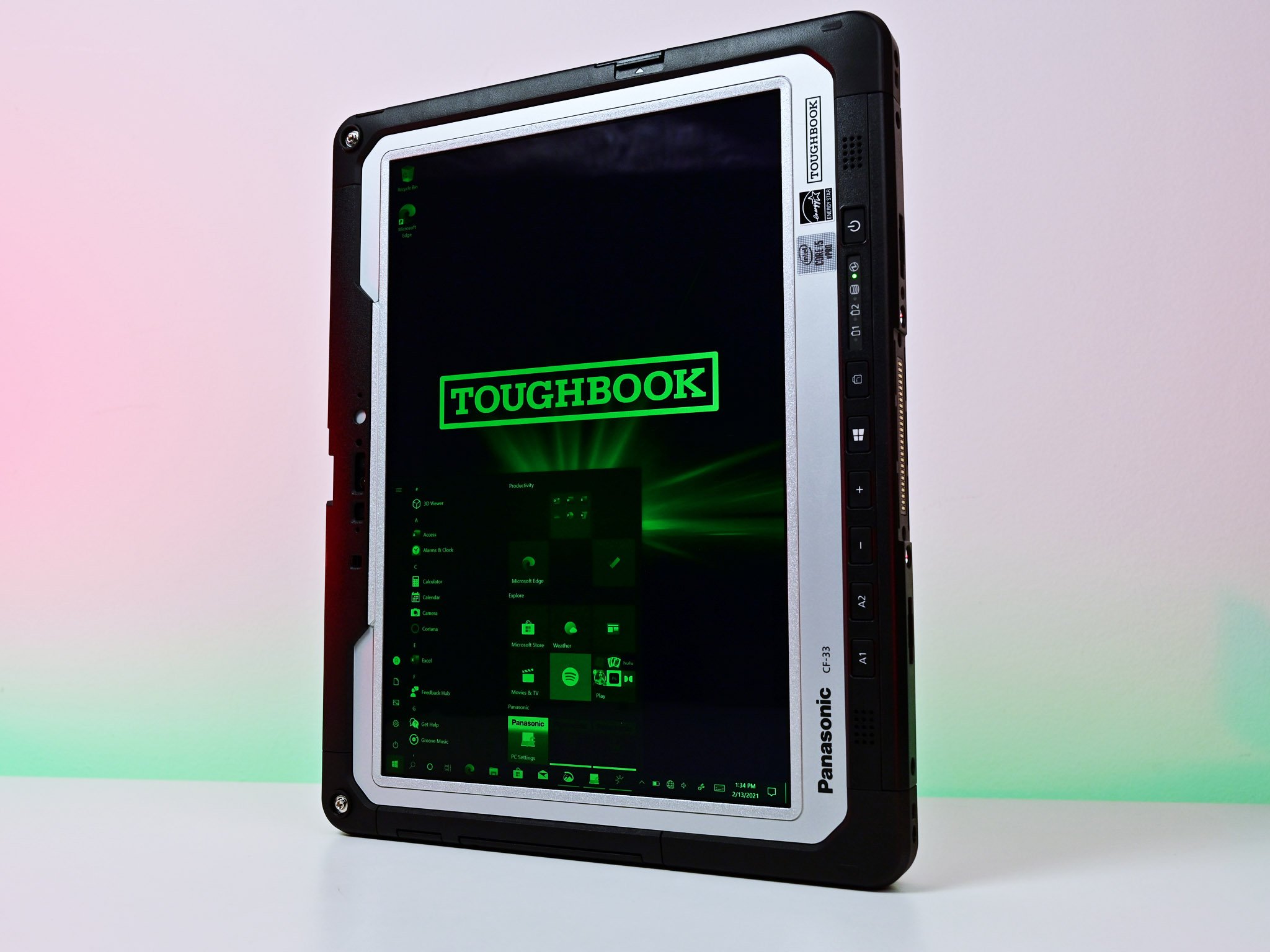
Features like louder speakers are needed since police, EMT, and first responders need to hear the audio in some boisterous environments, including burning buildings, highways, and places where sirens are likely roaring.
The pen and digitizer are also upgraded. The TOUGHBOOK 33 pen is siloed on the side of the tablet with a quick-release mechanism to pull it out (you won't lose it when siloed). The pen is now comparable to modern prosumer Ultrabooks with low latency and high accuracy.
So much stuff
Panasonic TOUGHBOOK 33 (2021): What I like
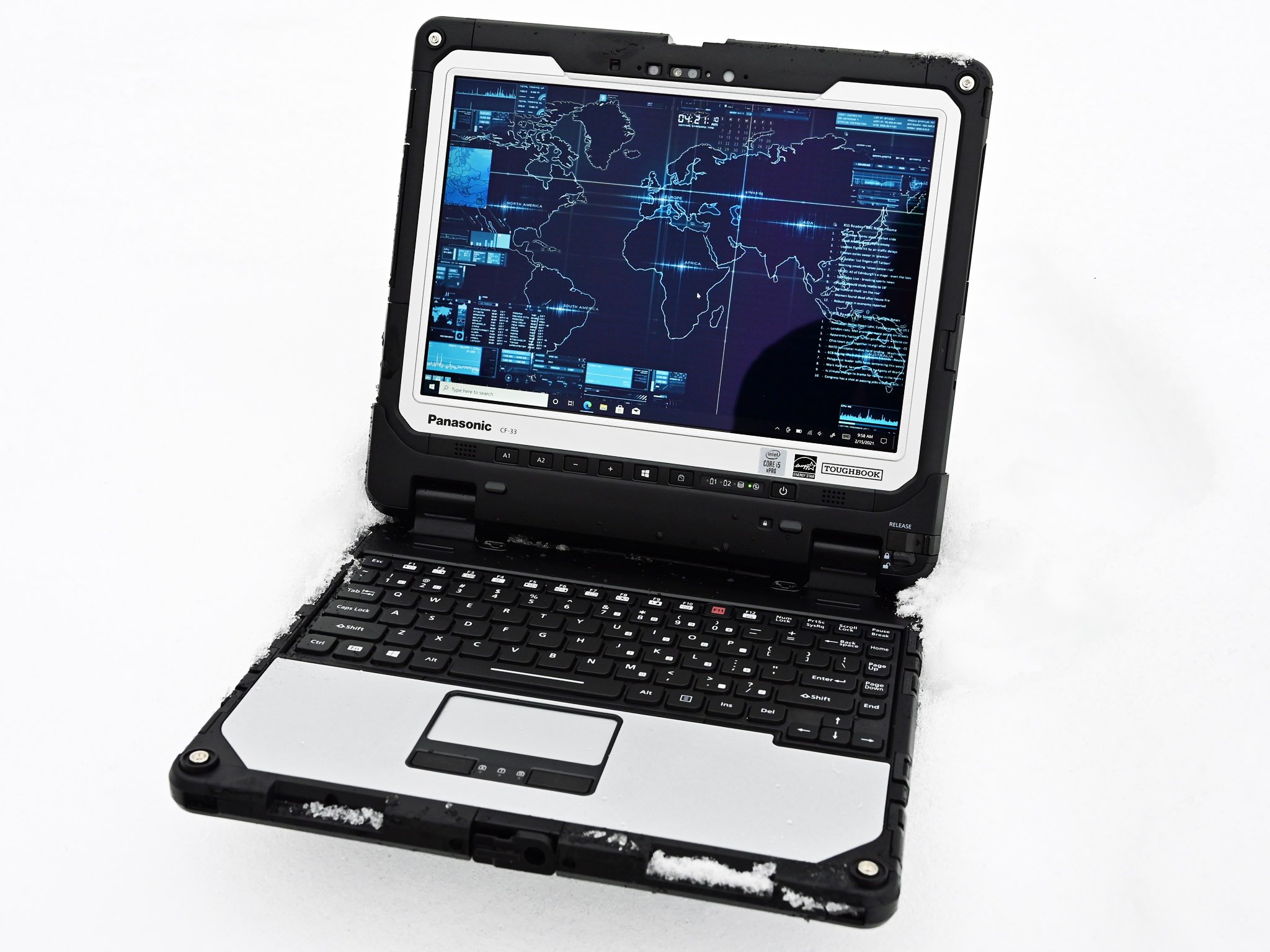
The TOUGHBOOK 33 is so packed with features, ports, and abilities it is difficult to summarize. At its core, it is a super rugged Windows 10 tablet that meets MIL-STD-461F, MIL-STD-810G, and IP65 certification. Add on the Premium Keyboard, and it's now a fully rugged laptop. Flip the display around, and you now have an alternate way to interact with it.
The tablet (which can be purchased without the Premium Keyboard) has multiple ports for Type-A, Type-C (with Power Delivery), full HDMI, Ethernet, headphone, and AC power. There is also a full-sized siloed pen on the right with exceptionally good inking.
On the front of the TOUGHBOOK 33, there are multiple hardware buttons for easy interaction. Two buttons (A1, A2) are user assigned and can be used to launch Panasonic's settings or enable the barcode reader, for example. There are also dedicated buttons for volume, Start, orientation lock, and power. Next to those are LEDs for the status of both batteries. Users can lock the tablet portion to the keyboard, and managers can hardware lock them further so employees cannot separate the two.

On the rear of the TOUGHBOOK 33, the metal compartment can unlock and reveal the two hot-swappable batteries. Below the left one is the nano-SIM slot for LTE.
The screen is also terrific and more premium than I expected. It has a lovely 3:2 2160 x 1440 resolution that supports touch but also works while wearing gloves. It's sharp, crisp, and the colors look great. Because this tablet is used outdoors, brightness can shoot up to an astounding 1,200 nits (most laptops struggle past 400). The direct bonding ensures excellent viewing angles with no discernable layering.
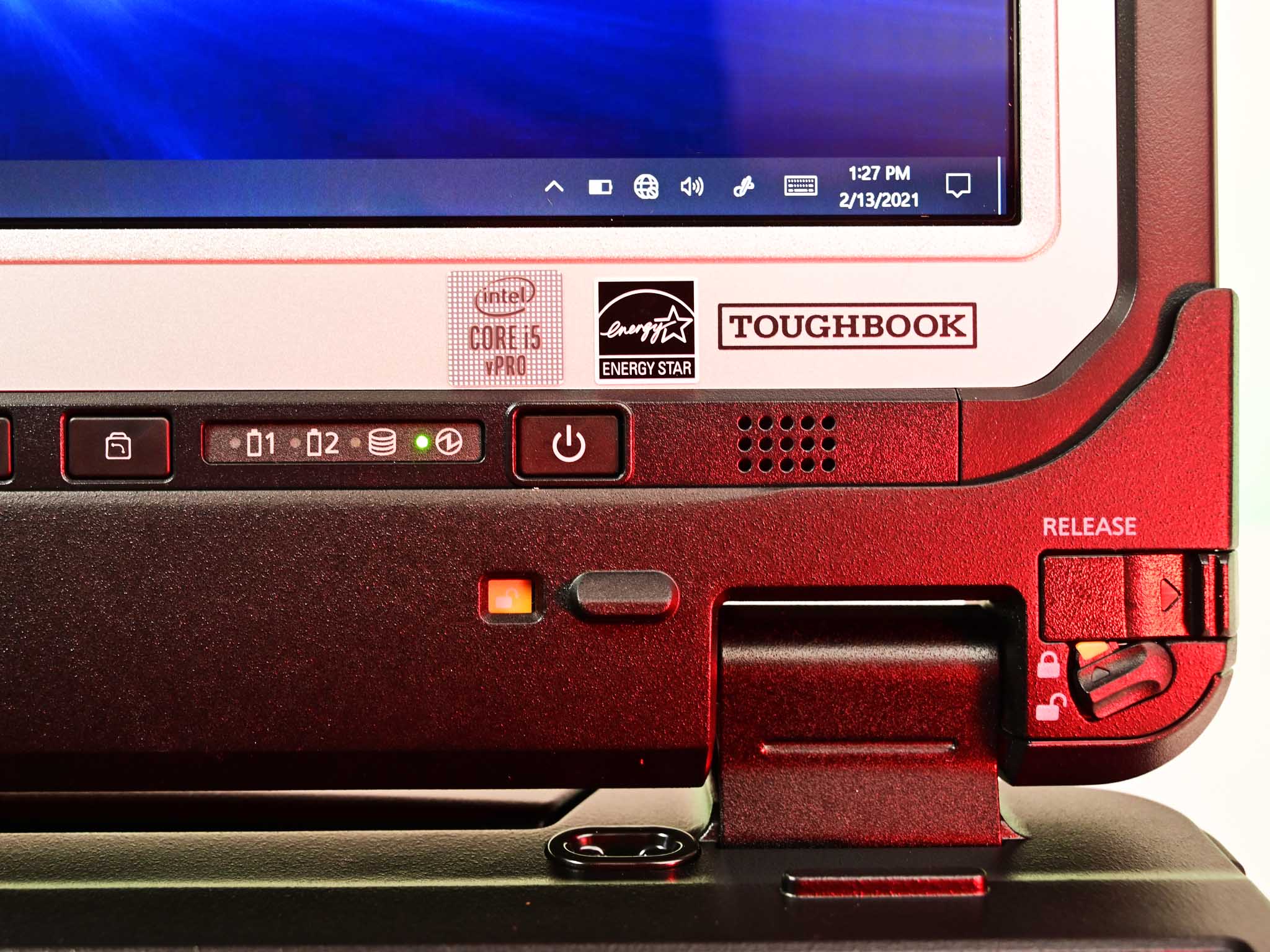
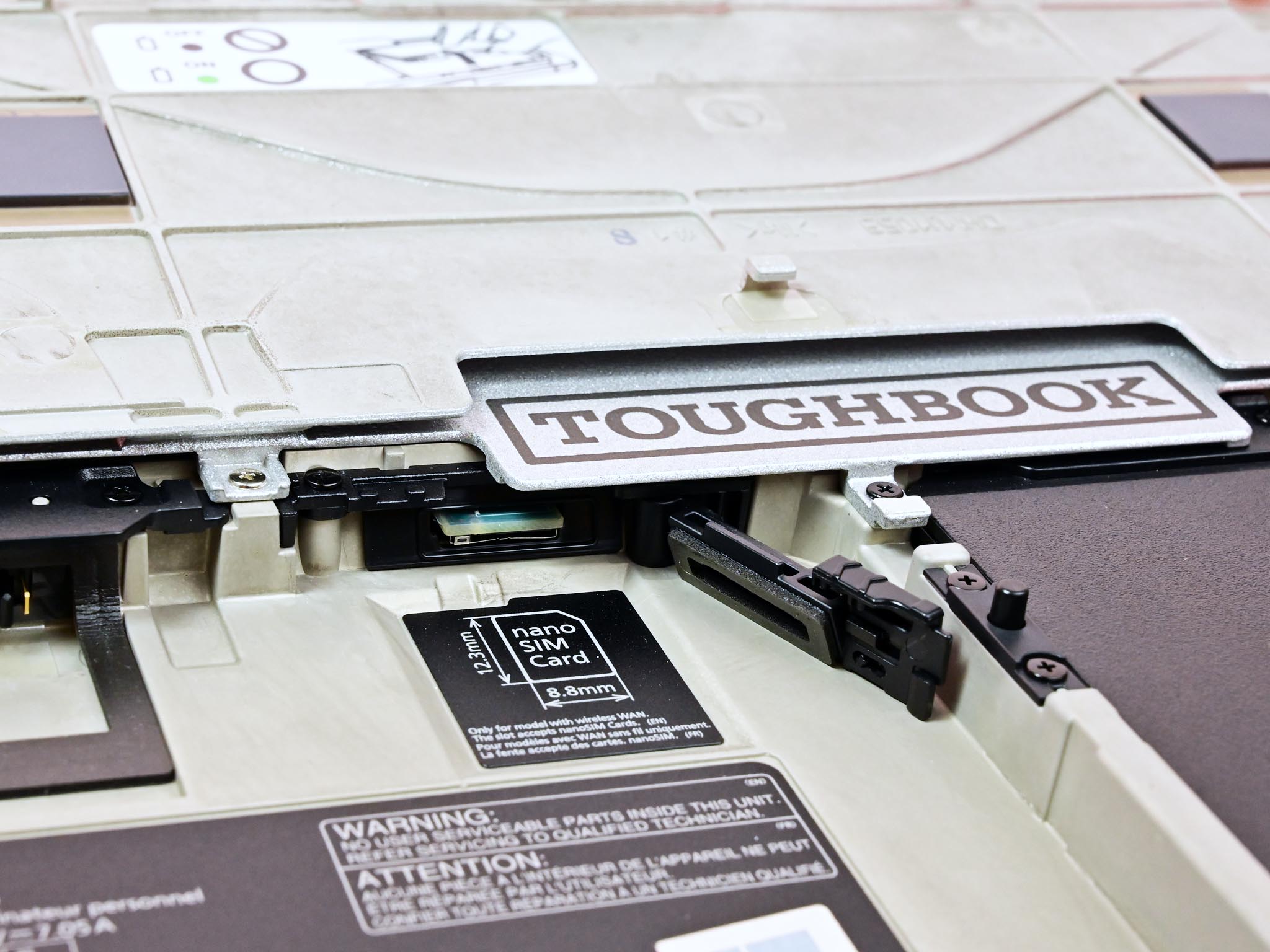
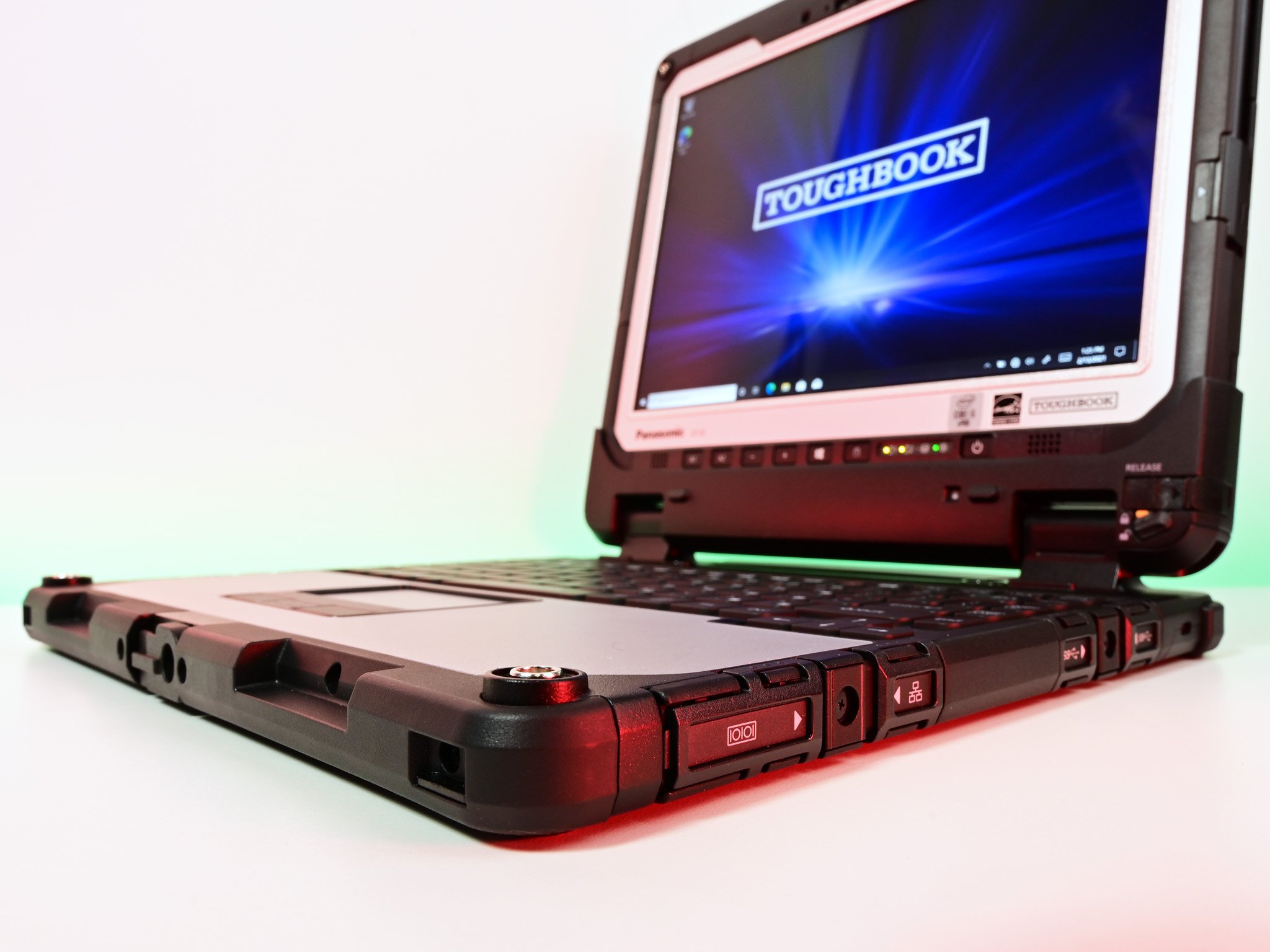
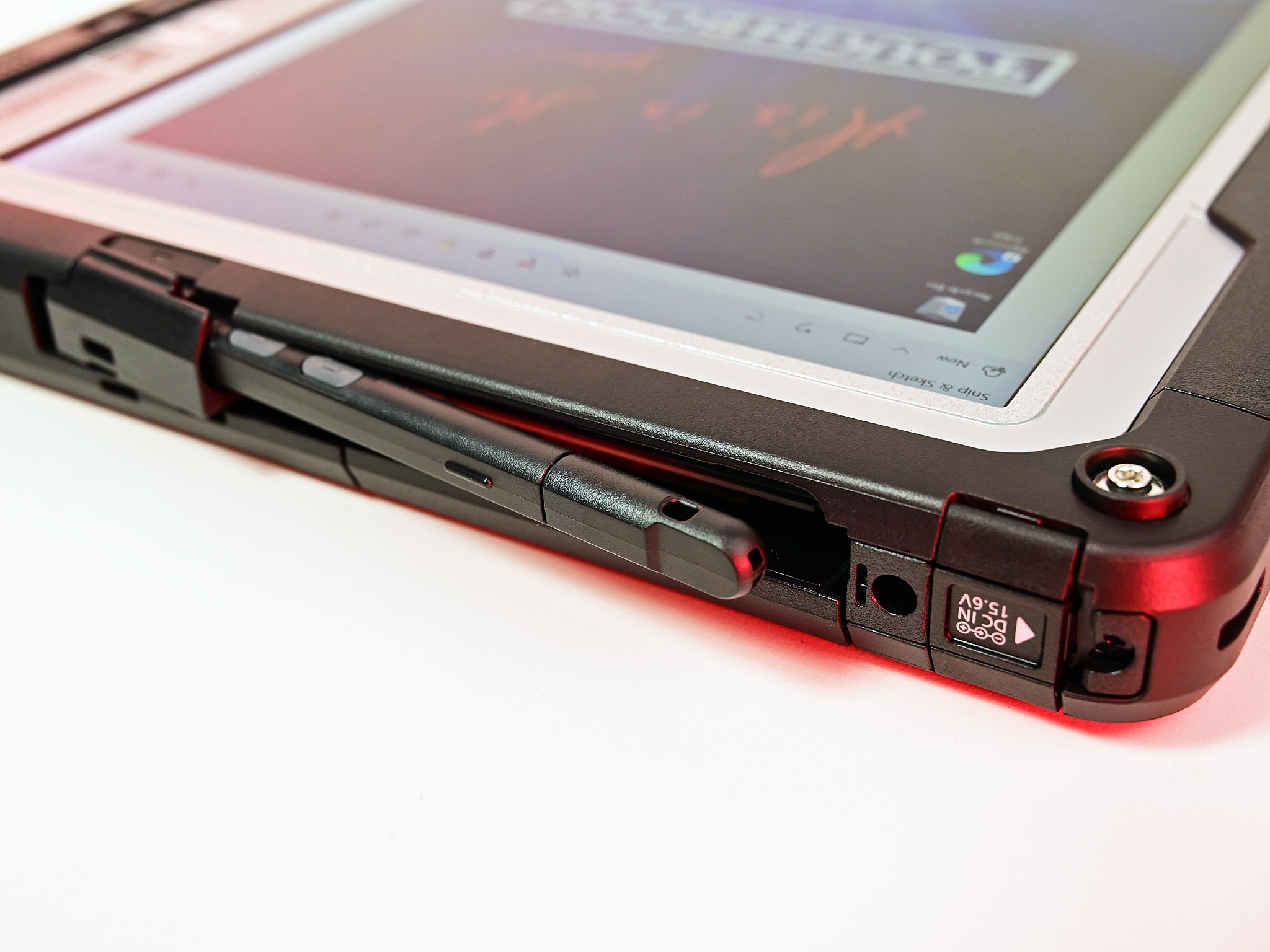
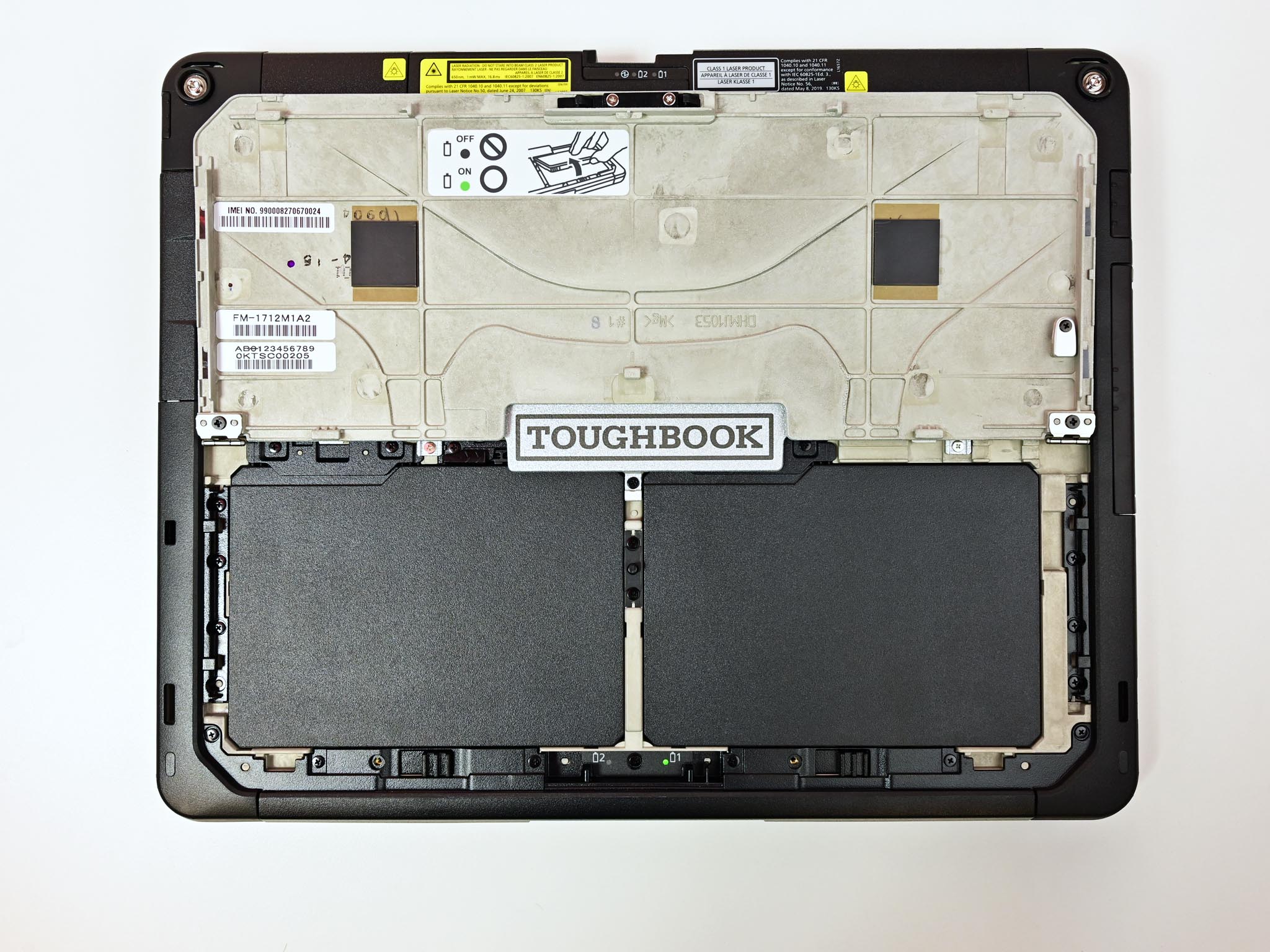
Moving onto the Premium Keyboard, it has a Docking Connector (25-pin), three Type-A, SD card reader, another HDMI, VGA-D, Ethernet RJ-45, and a Serial USB D-sub 9 pin. All the ports on the tablet and keyboard are locked behind sliding doors for protection and water resistance.
When combined, the tablet and the keyboard and be locked together, so it does not flop open. A grab-handle deploys from the bottom, so you can just grab and go to your next assignment.
TOUGHBOOK 33 supports two cameras with a front-facing 2MP full HD one, and a solid 8MP rear shooter with autofocus and a triple LED flash. The front one now features a privacy shutter. Typically, I do not expect much from these devices for imaging, but these cameras are better than average and quite good. Windows Hello infrared (IR) worked flawlessly. A fingerprint reader can also be installed via an insertable SmartCard CAC.
The audio, via the dual front-facing speakers, is booming and better than expected. At a 75 percent volume setting, I registered a peak of 80+ dB, which is near that of a vacuum cleaner. These are good speakers that Panasonic claims can hit 91 dB at max volume.
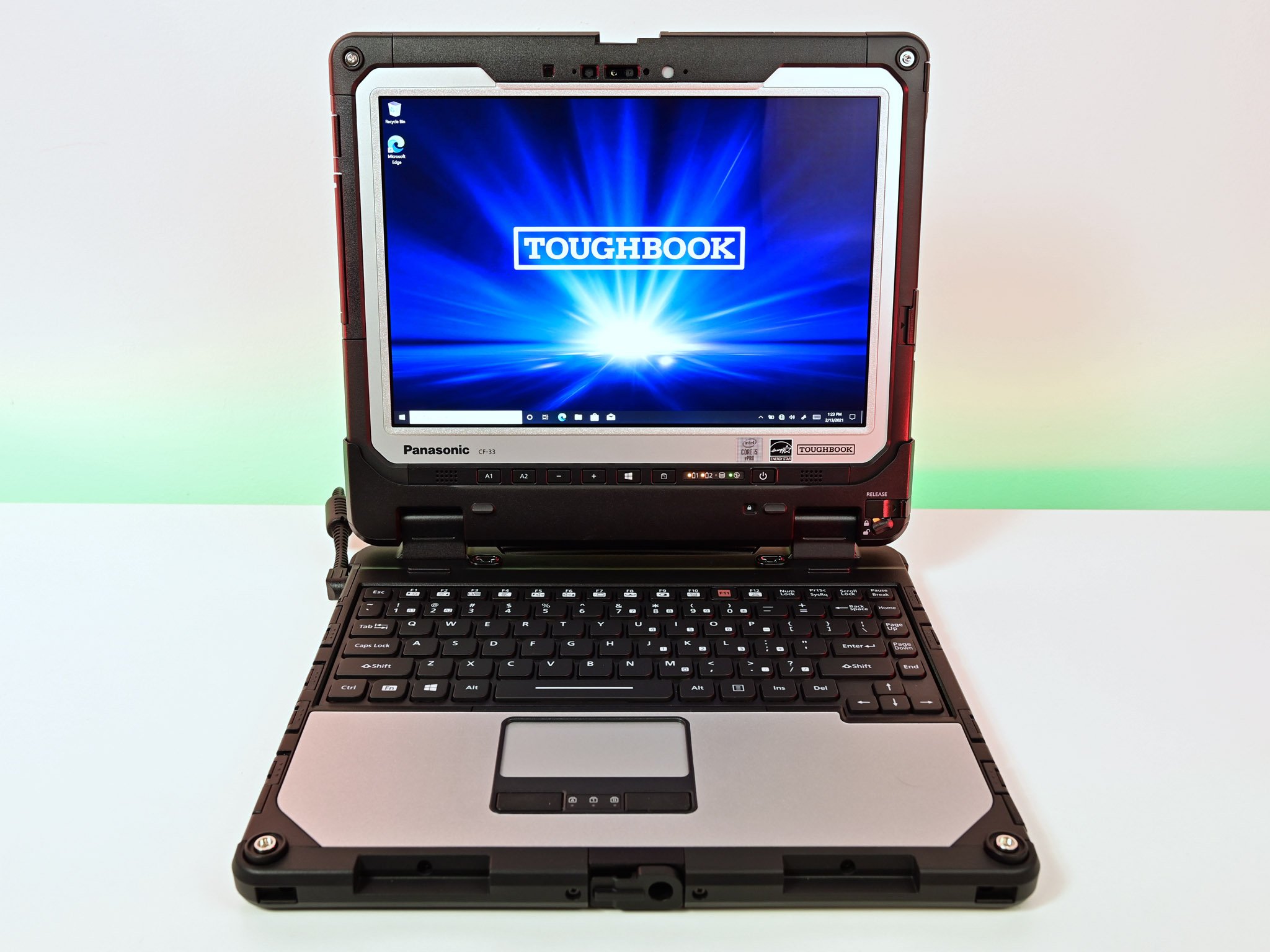
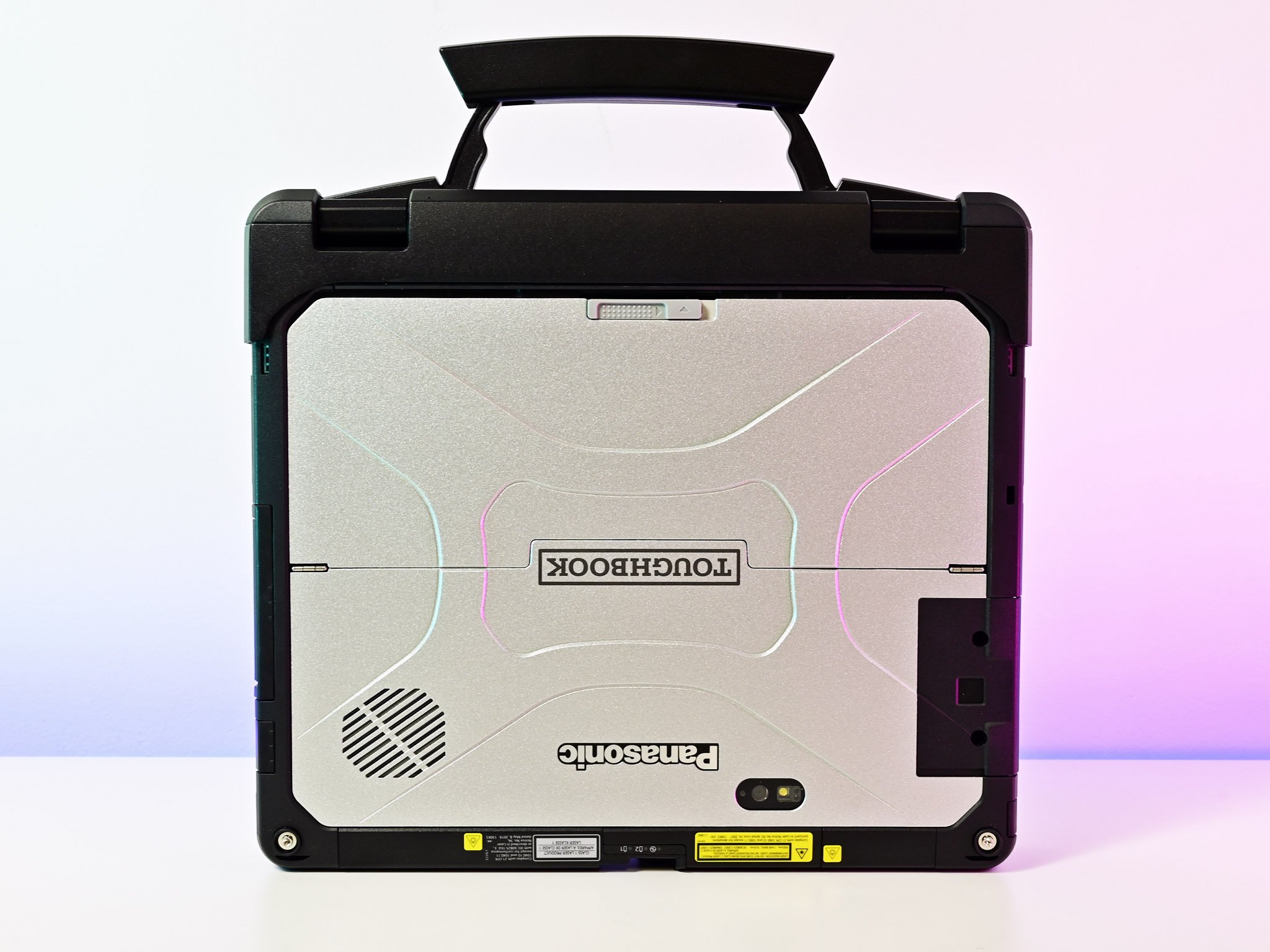
Overall, the TOUGHBOOK 33 is a brutalist's dream design. And yet, it is not bigger or more complicated than it needs to be as everything is easy to figure out even without a manual.
Panasonic also uses some clever software. The display can switch to various colors for low-light/nighttime usage without straining your eyes. Choose green, red, orange, blue, or even greyscale. The feature works in conjunction with the brightness sensor so it can enable automatically.
Throw in things like Wi-Fi 6, 4G LTE, and literally a built-in handle to carry the TOUGHBOOK 33, and this convertible laptop can do it all. It will survive on a battlefield, the back of an ambulance, or your local police cruiser.
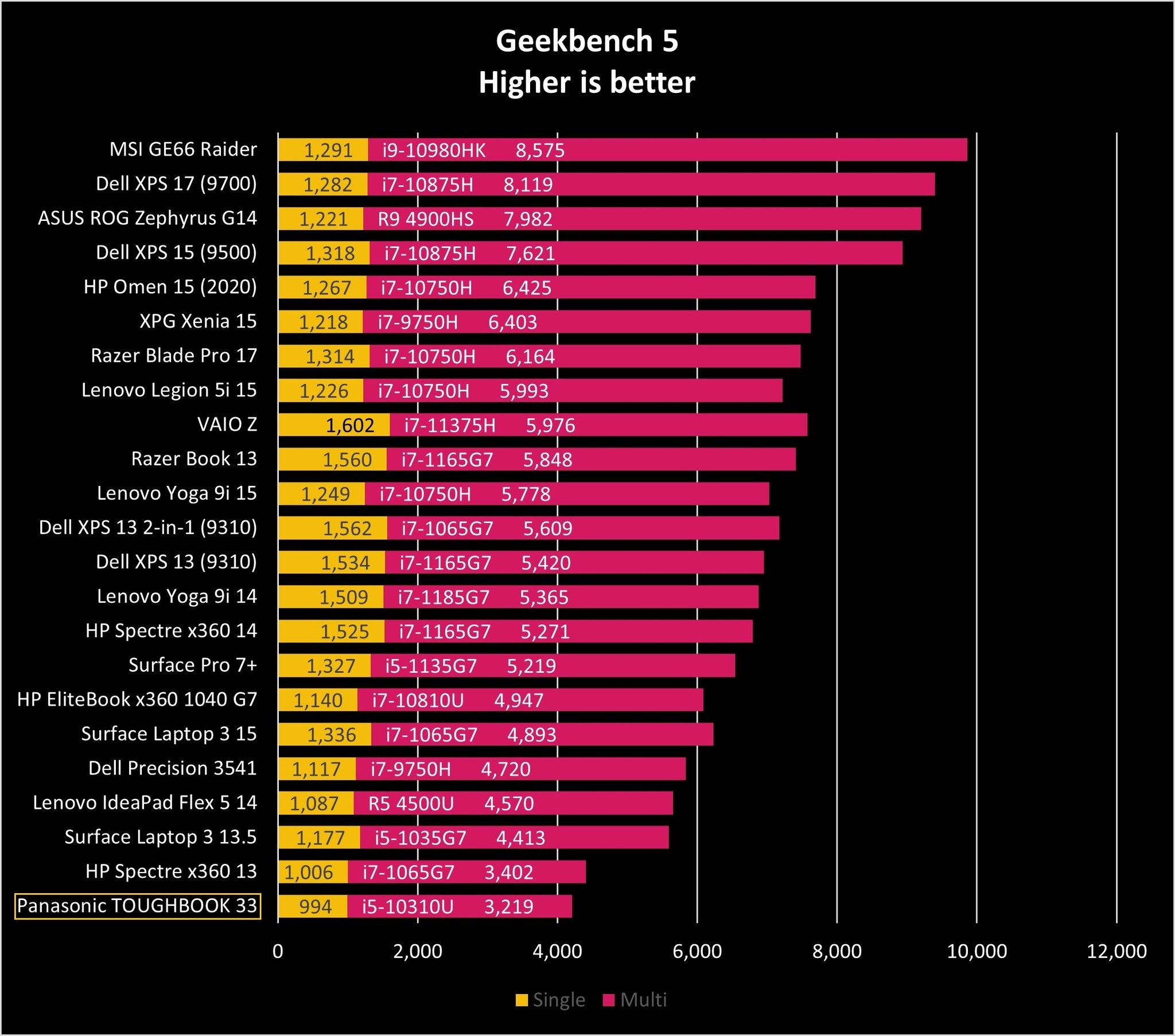

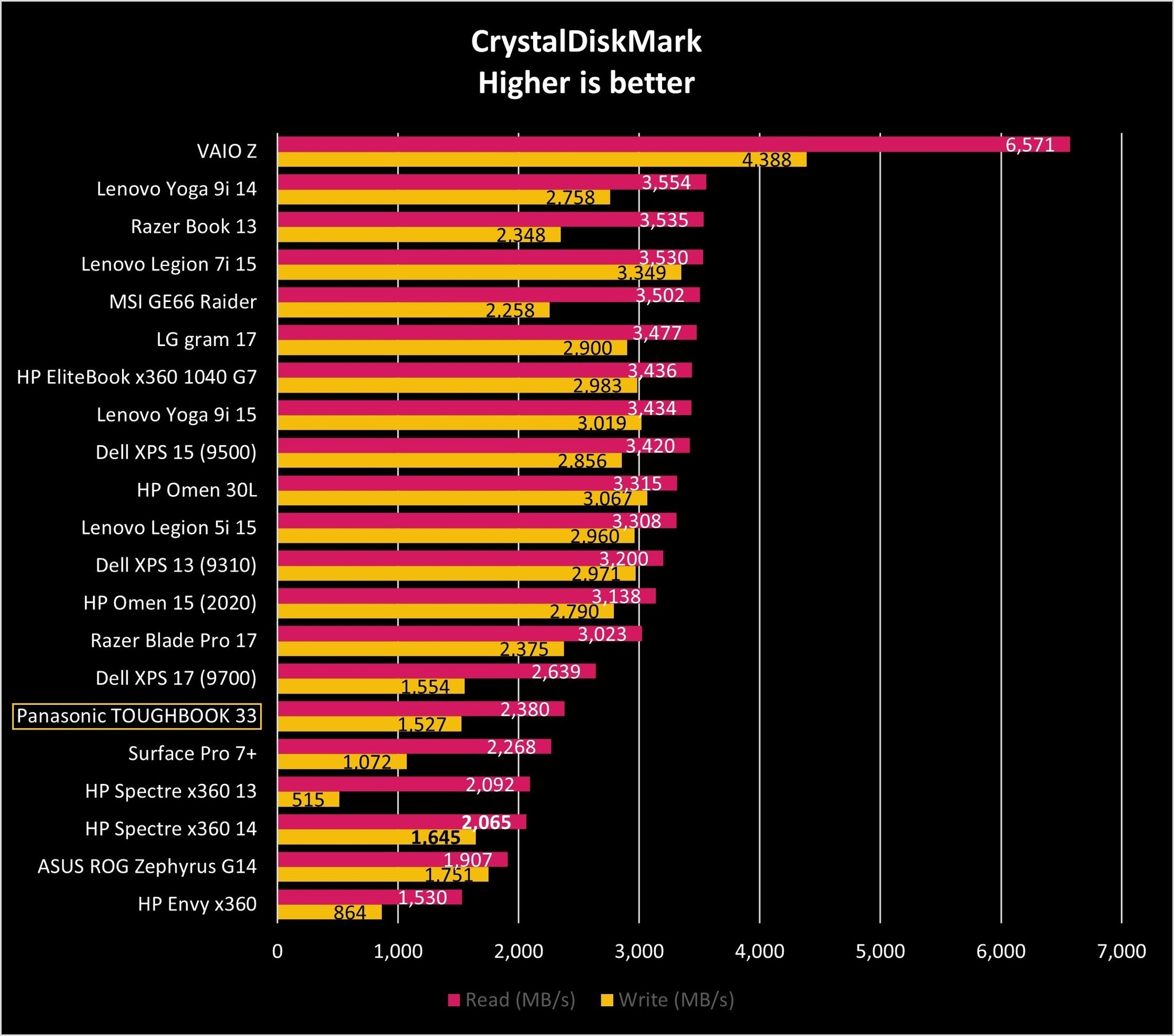
Performance is decent from the Core i5-10310U, a quad-core vPRO processor released in mid-2020. It doesn't set any records but is a nice upgrade from the previous dual-core 7th Gen i5-7300U.
Fan noise when under load is on the louder side as there is only one located at the tablet's back. It peaks around 48 dB, louder than almost every other laptop (save for gaming ones). That said, you won't be using this laptop in a library, but likely outside where it won't be an issue.
A few grumbles
Panasonic TOUGHBOOK 33 (2021): What I don't like
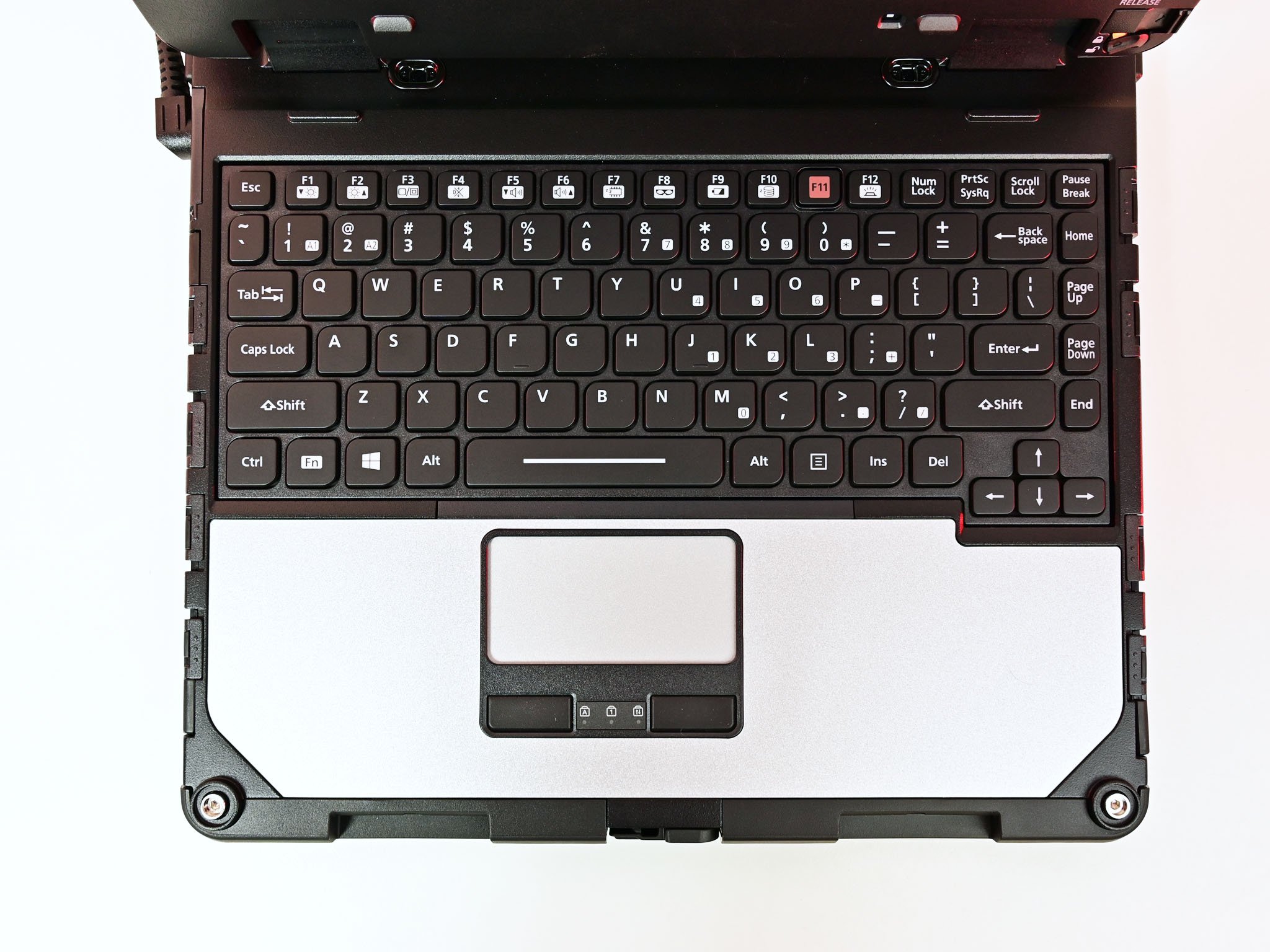
There are only a few complaints about the TOUGHBOOK 33. They all have to do with the Premium Keyboard and not the tablet itself.
The worst offender is the trackpad. The trackpad not physically clicking makes sense as this needs to be an exceptionally durable laptop – the fewer moving parts, the better. But it's also tiny and does not use Microsoft Precision drivers. Many times, I'd reach for the screen instead of the trackpad. I think something like Sensel's haptic touchpad technology would work perfectly for this device – no moving parts, it can vary in size, works with gloves, and it uses proper drivers. Hopefully, Panasonic will improve it in later versions.
I am surprised that the keyboard is mainly hollow and does not contain extra battery packs, even as a possibility. As a result, the TOUGHBOOK 33 is very top-heavy, and it wobbles over if you push the display back at a slight angle. Batteries in the base could counteract that and improve PC duration (Panasonic does sell Long Life Batteries that extend the size of the tablet as an option). Sure, the TOUGHBOOK 33 would even be heavier, but this is not the kind of laptop where you pull your punches.
Update: I've since learned you can pull out the rear handle, which then serves as a support to prevent the laptop from tipping too far back.

The keyboard backlighting is also a bit dim. Or rather, it uses red backlighting (which not only looks fantastic but is easier on the eyes for night usage). But because it is red, the contrast is less than that of white LEDs, making it appear dimmer. Panasonic ramped up the brightness significantly with this new iteration, but it is still quite dim unless in a dark room. I'd rather see Panasonic adopt what it did in the excellent FZ-55 TOUGHBOOK in supporting multiple LED colors, including green, orange, blue, or white.
Panasonic TOUGHBOOK 33 (2021): The competition
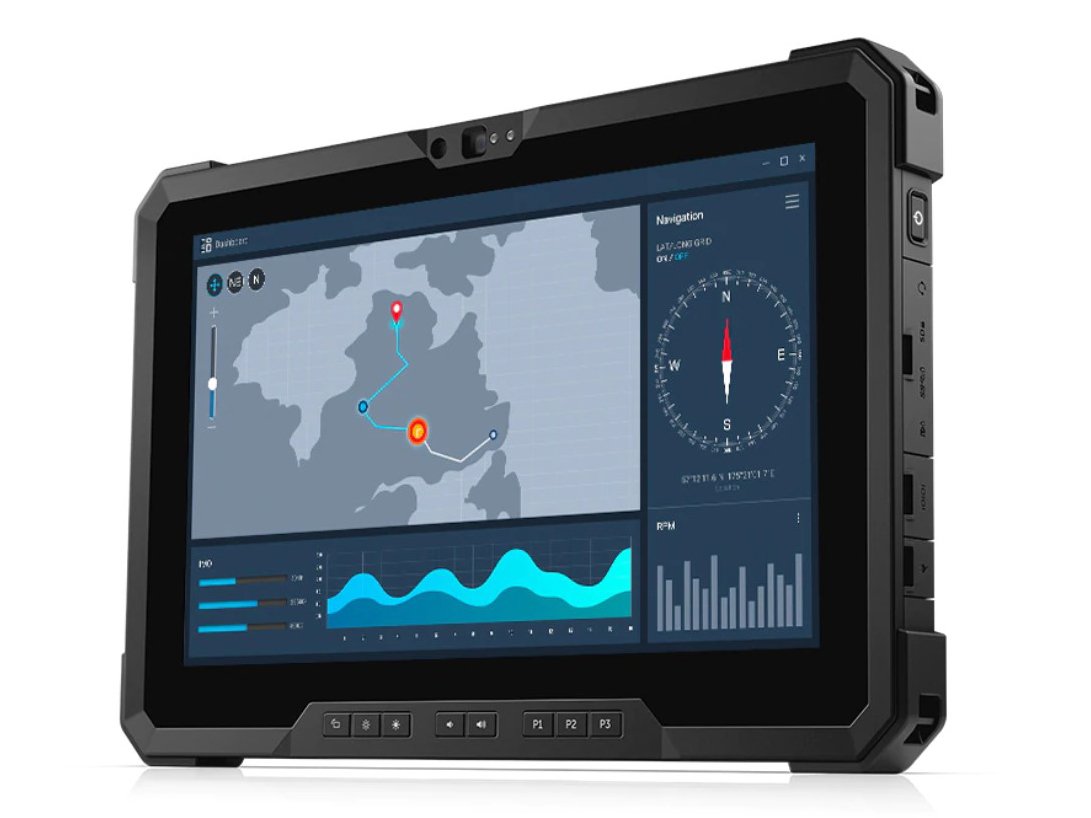
There's not much competition in this space due to the niche demographic combined with Panasonic's dominance in this sector.
Dell is the most likely alternative with its Latitude 7720 Rugged Extreme tablet and add-on keyboard/kickstand. However, it's still running Intel 8th Gen and doesn't quite have all the features of the TOUGHBOOK 33.
There is also the less familiar GETAC F110, which is also still on Intel 8th Gen and doesn't quite have the same Premium Keyboard option and maxes out at only 8GB of RAM.
Some may not need TOUGHBOOK 33's primary function, which is a tablet PC with inking. For those who prefer a more traditional laptop (also with inking) but with similar features, the Panasonic CF-55 is an incredible laptop that is also fully modular. I use this laptop myself – even hiking 4,000 to a top of a mountain where the 4G LTE worked without a hitch.
For more recommendations, see our best-rugged laptops to see other options.
Panasonic TOUGHBOOK 33 (2021): Should you buy?
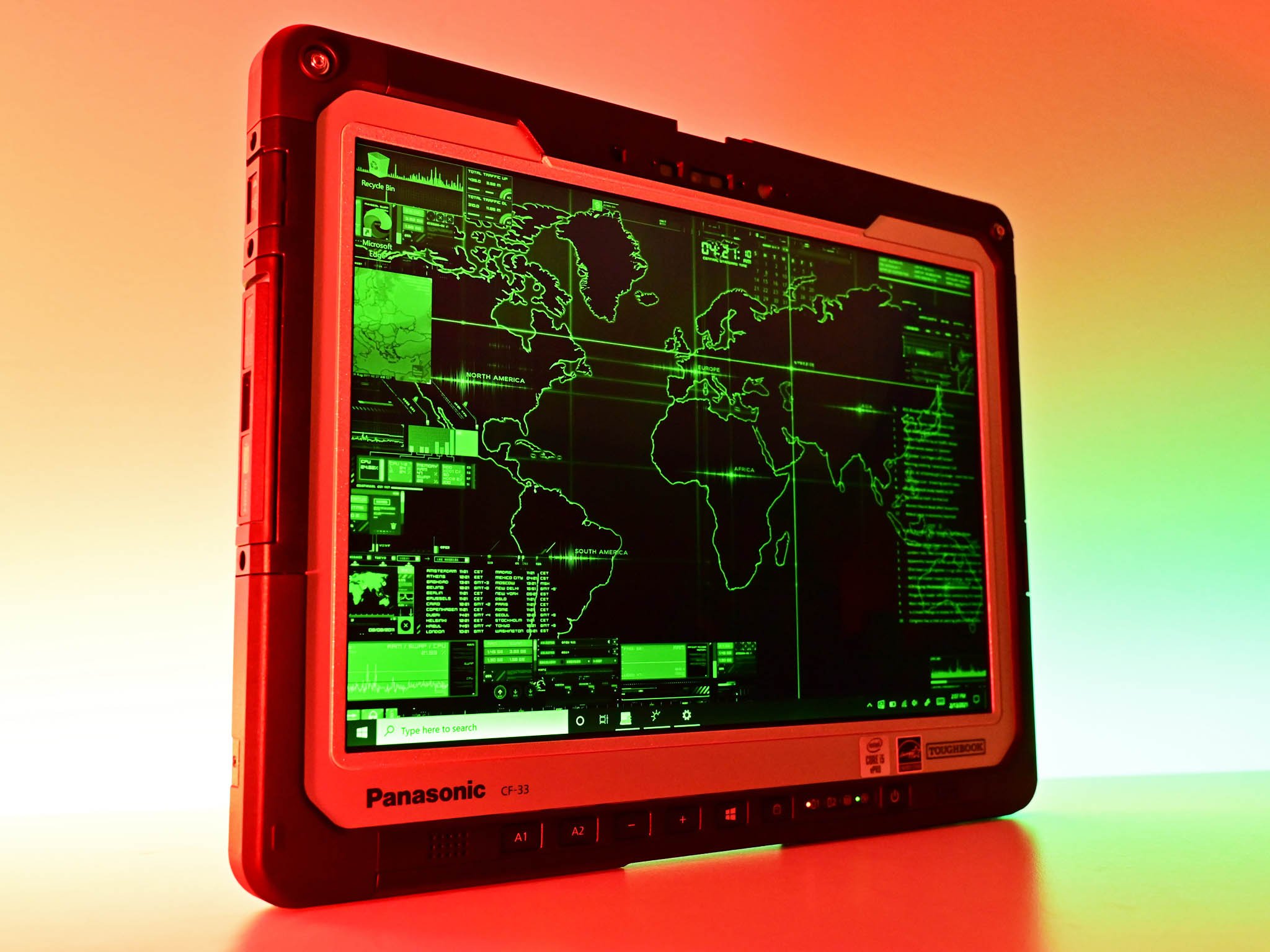
You should buy this if ...
- You need the best rugged 2-in-1 Windows PC
- You need 4G LTE and work in harsh environments
- You work for the military or as a first responder
- You're a "prepper" waiting for the end of civilization
You should not buy this if ...
- You don't need a 2-in1 rugged PC
- You don't work outdoors or in challenging environments
- You don't work for a company or government org that would buy this for you
- You're a consumer who likes to pretend you work for the CIA
Most people who get the TOUGHBOOK 33 will have it assigned to them for deployment at their job. There is no natural way just to go and buy this at Best Buy.
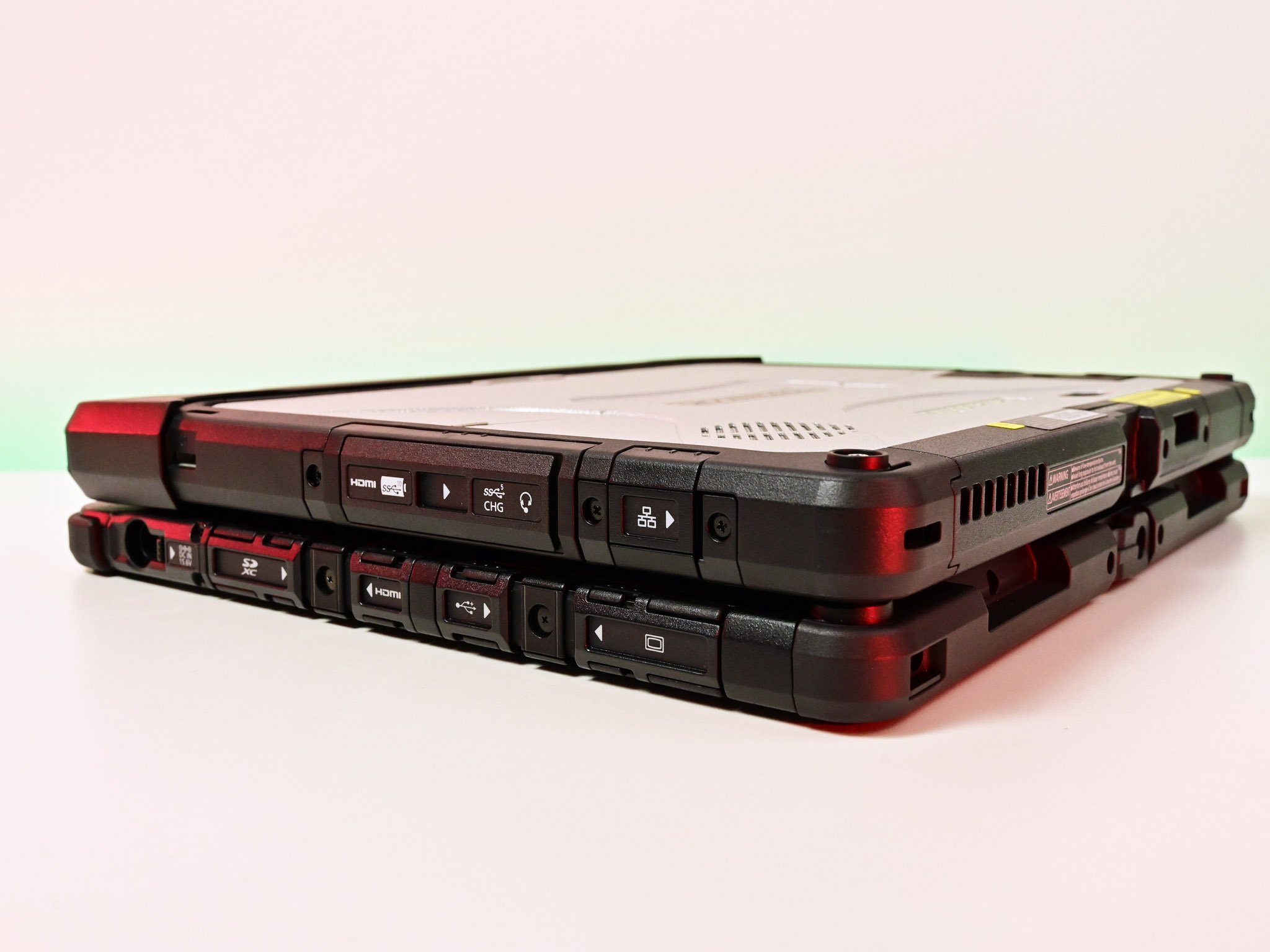

But for the military, first responders like EMT, police, or fire, or those who work as outdoor contractors, the TOUGHBOOK 33 is unparalleled. It features the latest connectivity, an excellent 2K display, outstanding audio, supports pen and inking, and is intuitive to use.
There is a reason why the TOUGHBOOK 33 is the number one selling rugged PC and tablet, and this refresh makes it set for the next four years of use out in the field.
Panasonic builds devices like the TOUGHBOOK 33 for some of the harshest environments and people who are putting it all out there, usually to help others. While there are a few areas where Panasonic can improve, there is a lot to like here, especially if you need the power of a networked PC in more than just a Starbucks.

Bottom line: The best-selling rugged tablet PC is back with more features and improved functionality. Built for the military and first responders, the TOUGHBOOK 33 (CF-33) delivers 4G LTE, support for Band 48 CBRS, eSIM, more RAM and storage, improved inking, and Intel 10th Gen. Only the trackpad and OK battery life keep it from being perfect.

Daniel Rubino is the Editor-in-chief of Windows Central. He is also the head reviewer, podcast co-host, and analyst. He has been covering Microsoft since 2007 when this site was called WMExperts (and later Windows Phone Central). His interests include Windows, laptops, next-gen computing, and wearable tech. He has reviewed laptops for over 10 years and is particularly fond of 2-in-1 convertibles, Arm64 processors, new form factors, and thin-and-light PCs. Before all this tech stuff, he worked on a Ph.D. in linguistics, performed polysomnographs in NYC, and was a motion-picture operator for 17 years.
